Photograph by Ing-On Vibulbhan-Watts
I went to Thailand to visit my family for two months, from July and August 2017. I did not visit home since 2006. I was glad to see my family. I enjoyed seeing all new development in Bangkok and loved eating authentic Thai food, especially Thai fruits.
I had a chance to visit my home town, Lopburi, where I was raised when I was young, before we moved to Bangkok. I traveled to Ayutthaya to see the ruins of temples that were burned by Burmese soldiers, when the Burmese wanted to take over Thailand, The Burmese–Siamese War (1765–1767). Ayutthaya was one of the former capitals of Thailand before moved to, Thonburi and then Bangkok. I also traveled to, Chiang Mai, located in the Northern part of Thailand. Chiang Mai is the second largest and second most popular city of Thailand.
John, my husband came to Thailand in August. He joined me traveling to different part of Thailand. I had a good time taking videos and photographs wherever I traveled around Bangkok and other part of Thailand. I hope the viewers of my website will enjoy the photographs that I present in these projects.
Ing-On Vibulbhan-Watts, Thursday, October 26, 2017
Street Art in Pathum Thani and Bangkok, Thailand
 Street Art in Pathum Thani, Thailand, near Future Park Mall, photos captured on Tuesday, August 22, 2017
Street Art in Pathum Thani, Thailand, near Future Park Mall, photos captured on Tuesday, August 22, 2017
Photograph by Ing-On Vibulbhan-Watts
Pathum Thani is one of the central provinces (changwat) of Thailand. Neighboring provinces are (from north clockwise) Ayutthaya, Saraburi, Nakhon Nayok, Chachoengsao, Bangkok, and Nonthaburi.
For more information please visit the following link: https://en.wikipedia.org/wiki/Pathum_Thani_Province
Street Art in Pathum Thani, Thailand, near Future Park Mall, photos captured on Tuesday, August 22, 2017
The province is north of Bangkok and is part of the Bangkok metropolitan area. In many places the boundary between the two provinces is not noticeable as both sides of the boundary are equally urbanized. Pathum Thani town is the administrative seat, but Ban Rangsit, seat of Thanyaburi District, is the largest populated place in the province.[2]
Street Art in Pathum Thani, Thailand, near Future Park Mall, photos captured on Tuesday, August 22, 2017
Pathum Thani is an old province, heavily populated by the Mon people, dotted with 186 temples and parks. The Dream World amusement park is here
For more information please visit the following link: https://en.wikipedia.org/wiki/Pathum_Thani_Province
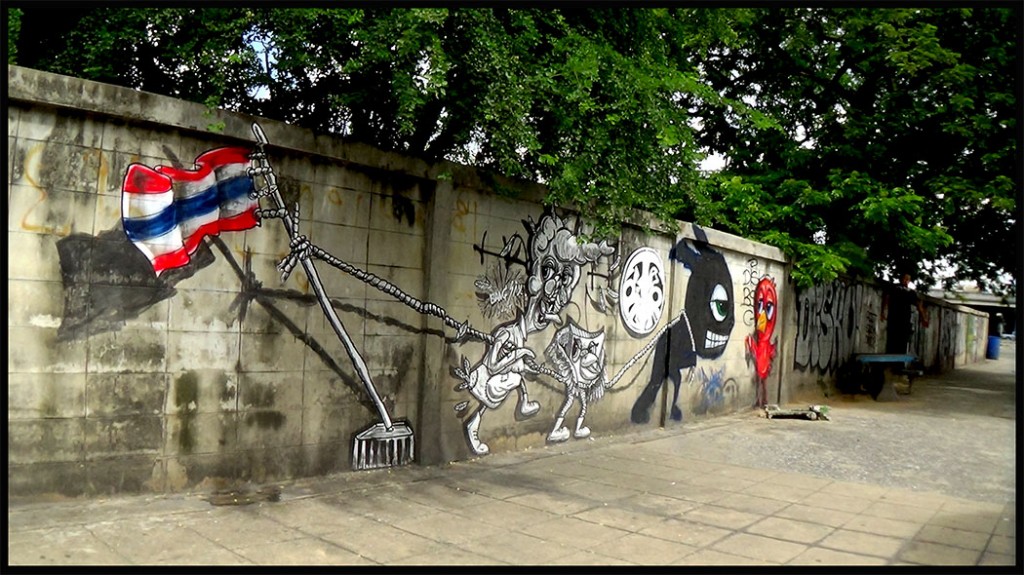 Street Art in Pathum Thani, Thailand, near Future Park Mall, photos captured on Tuesday, August 22, 2017
Street Art in Pathum Thani, Thailand, near Future Park Mall, photos captured on Tuesday, August 22, 2017
Education and technology
Pathum Thani has a very high concentration of higher education institutions, especially ones in the field of science and technology. This, together with a large number of industrial parks and research facilities (including those in Thailand Science Park), make the region the educational and technology hub of the area.
For more information please visit the following link:
https://en.wikipedia.org/wiki/Pathum_Thani_Province
Street Art in Pathum Thani, Thailand, near Future Park Mall, photos captured on Tuesday, August 22, 2017
Photograph by Ing-On Vibulbhan-Watts
“Education and technology
Pathum Thani has a very high concentration of higher education institutions, especially ones in the field of science and technology. This, together with a large number of industrial parks and research facilities (including those in Thailand Science Park), make the region the educational and technology hub of the area.
Academic institutes
National Science Museum, Asian Institute of Technology, Bangkok University, Eastern Asia University, Pathumthani University, Rajamangala University of Technology, Rangsit University, Shinawatra University, Sirindhorn International Institute of Technology, and Thammasat University (Rangsit Center)”
For more information please visit the following link: https://en.wikipedia.org/wiki/Pathum_Thani_Province
Street Art in Pahtum Thani, Thailand, near Future Park Mall, photos captured on Tuesday, August 22, 2017
“Education and technology
Pathum Thani has a very high concentration of higher education institutions, especially ones in the field of science and technology. This, together with a large number of industrial parks and research facilities (including those in Thailand Science Park), make the region the educational and technology hub of the area.
Research bodies
Thailand Science Park, National Science and Technology Development Agency (NSTDA), National Center for Genetic Engineering and Biotechnology (BIOTEC), National Metal and Materials Technology Center (MTEC), National Nanotechnology Center (NANOTEC), National Electronics and Computer Technology Center (NECTEC), Thai Microelectronics Center (TMEC), Thailand Institute of Scientific and Technological Research (TISTR), TOT Innovation Institute (TOT)”
For more information please visit the following link: https://en.wikipedia.org/wiki/Pathum_Thani_Province
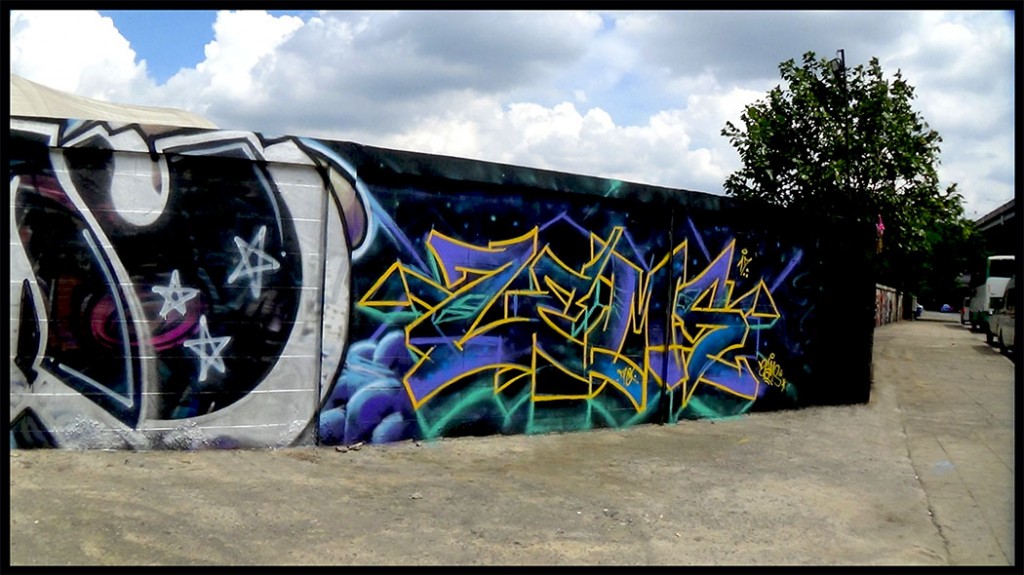 Street Art in Pathum Thani, Thailand, near Future Park Mall, photos captured on Tuesday, August 22, 2017
Street Art in Pathum Thani, Thailand, near Future Park Mall, photos captured on Tuesday, August 22, 2017
Photograph by Ing-On Vibulbhan-Watts
Education and technology
“Pathum Thani has a very high concentration of higher education institutions, especially ones in the field of science and technology. This, together with a large number of industrial parks and research facilities (including those in Thailand Science Park), make the region the educational and technology hub of the area.
Industrial parks
Software Park Thailand (in Nonthaburi, southwest of Pathum Thani), Nava Nakorn Industrial Promotion Zone (1376 acres / 5.6 km²), Bangkadi Industrial Park (470 acres / 1.9 km²), Techno Thani (a “Technology City” administered by the Ministry of Science and Technology), and a number of industrial parks in neighboring Ayutthaya and Nonthaburi Provinces”
For more information please visit the following link: https://en.wikipedia.org/wiki/Pathum_Thani_Province
Street Art in Pathum Thani, Thailand, near Future Park Mall, photos captured on Tuesday, August 22, 2017
“Pathum Thani is one of the central provinces (changwat) of Thailand. Neighboring provinces are (from north clockwise) Ayutthaya, Saraburi, Nakhon Nayok, Chachoengsao, Bangkok, and Nonthaburi.
The province is north of Bangkok and is part of the Bangkok metropolitan area. In many places the boundary between the two provinces is not noticeable as both sides of the boundary are equally urbanized. Pathum Thani town is the administrative seat, but Ban Rangsit, seat of Thanyaburi District, is the largest populated place in the province.[2]
Pathum Thani is an old province, heavily populated by the Mon people, dotted with 186 temples and parks. The Dream World amusement park is here.
Geography
The province lies on the low alluvial flats of the Chao Phraya River that flows through the capital. Many canals (khlongs) cross the province and feed the rice paddies.
History
The city dates back to a settlement founded by Mon migrating from Mottama in Myanmar around 1650. The original name was “Sam Khok”.[3]:230,369 In 1815 King Rama II visited the city and the citizens offered him many lotus flowers, which prompted the king to rename the city “Pathum Thani”, meaning “the lotus flower town”.[4]
Symbols
The provincial seal shows a pink lotus flower with two rice stalks bending over it, representing the fertility of the province. The provincial tree is the Indian coral tree (Erythrina variegata). The provincial flower is the lotus (Nymphaea lotus).
Administrative divisions
The province is divided into seven districts (amphoe). The districts are further subdivided into 60 communes (tambon) and 529 villages (muban).
For more information please visit the following link: https://en.wikipedia.org/wiki/Pathum_Thani_Province
Street Art in Pathum Thani, Thailand, near Future Park Mall, photos captured on Tuesday, August 22, 2017
Photograph by Ing-On Vibulbhan-Watts
Silpakorn University: Mahawitthayalai Sinlapakon is a national university in Thailand. The university was founded in Bangkok in 1943 by Italian-born art professor Corrado Feroci, who took the Thai name Silpa Bhirasri when he became a Thai citizen. It began as a fine arts university and now includes many other faculties as well. In 2016, it has 25,210 students.[4]
For more information please visit the following link:
https://en.wikipedia.org/wiki/Silpakorn_University
Street Art in Pathum Thani, Thailand, near Future Park Mall, photos captured on Tuesday, August 22, 2017
“History: Silpakorn University was originally established as the School of Fine Arts under Thailand’s Fine Arts Department in 1933. The school offered the only painting and sculpture programs and waived tuition fees for government officials and students. Its creation owes much to the almost lifetime devotion of Professor Silpa Bhirasri, an Italian sculptor (formerly Corrado Feroci) who was commissioned during the reign of King Rama VI to work in the Fine Arts Department. He subsequently enlarged his classes to include greater members of the interested public before setting up the School of Fine Arts. The school gradually developed and was officially accorded a new status and named Silpakorn University on 12 October 1943.[2] Its inaugural faculty was the Faculty of Painting and Sculpture. In 1955, the Faculty of Thai Architecture was established, later named the Faculty of Architecture) and two more faculties were created, the Faculty of Archaeology and the Faculty of Decorative Arts.”
For more information please visit the following link:
https://en.wikipedia.org/wiki/Silpakorn_University
 Street Art in Pathum Thani, Thailand, near Future Park Mall, photos captured on Tuesday, August 22, 2017
Street Art in Pathum Thani, Thailand, near Future Park Mall, photos captured on Tuesday, August 22, 2017
In 1966, Silpakorn University diversified the four faculties into sub-specializations to broaden its offerings, but the university’s Wang Tha Phra campus proved inadequate. A new campus, Sanam Chandra Palace, was established in Nakhon Pathom Province in the former residential compound of King Rama VI. The first two faculties based on this campus were the Faculty of Arts in 1968 and the Faculty of Education in 1970. Later, three more faculties were created: the Faculty of Science in 1972, the Faculty of Pharmacy in 1986, and the Faculty of Engineering and Industrial Technology in 1992. In 1999, the Faculty of Music was created.
For more information please visit the following link:
https://en.wikipedia.org/wiki/Silpakorn_University
Street Art in Pathum Thani, Thailand, near Future Park Mall, photos captured on Tuesday, August 22, 2017
“In 1997, Silpakorn extended its reach by establishing a new campus in Phetchaburi Province. The new campus was named “Phetchaburi Information Technology Campus”. In 2001 and 2002, the Faculty of Animal Sciences and Agricultural Technology and the Faculty of Management Science were established on the Phetchaburi Campus. In 2003, the Faculty of Information and Communication Technology (ICT) was established, as well as Silpakorn University International College (SUIC). Its role is to provide an international curriculum in additional fields of study.
Ganesha, one of the Hindu deities symbolizing arts and crafts, is Silpakorn University’s emblem.[1] The “university tree” is the chan tree.”
For more information please visit the following link:
https://en.wikipedia.org/wiki/Silpakorn_University
Street Art in Pathum Thani, Thailand, near Future Park Mall, photos captured on Tuesday, August 22, 2017
Photograph by Ing-On Vibulbhan-Watts
“Silapakorn University Art Gallery: Hosin Mahawitthayalai Sinlapakon) is an art gallery and museum in Bangkok, Thailand. It is a building in Silpakorn University Wang Tha Phra Campus on Na Pralarn Road, directly north of the Grand Palace and south of Wat Mahathat Yuwaratrangsarit. It was created in 1994.[1]”
For more information please visit the following link:
https://en.wikipedia.org/wiki/Silpakorn_University_Art_Gallery
Street Art in Pathum Thani, Thailand, near Future Park Mall, photos captured on Tuesday, August 22, 2017
“Silpakorn University (also known as the University of Fine Arts) is a National university in Thailand. The university was founded in Bangkok in 1943[2] by Italian-born art professor Corrado Feroci, who took the Thai name Silpa Bhirasri when he became a Thai citizen. It began as a fine arts university and now includes many other faculties as well.”
For more information please visit the following link:
https://en.wikipedia.org/wiki/Silpakorn_University_Art_Gallery
Street Art in Pathum Thani, Thailand, near Future Park Mall, photos captured on Tuesday, August 22, 2017
Museums and art galleries in Bangkok
Golden Jubilee Museum of Agriculture
For more information please visit the following link:
https://en.wikipedia.org/wiki/Silpakorn_University_Art_Gallery
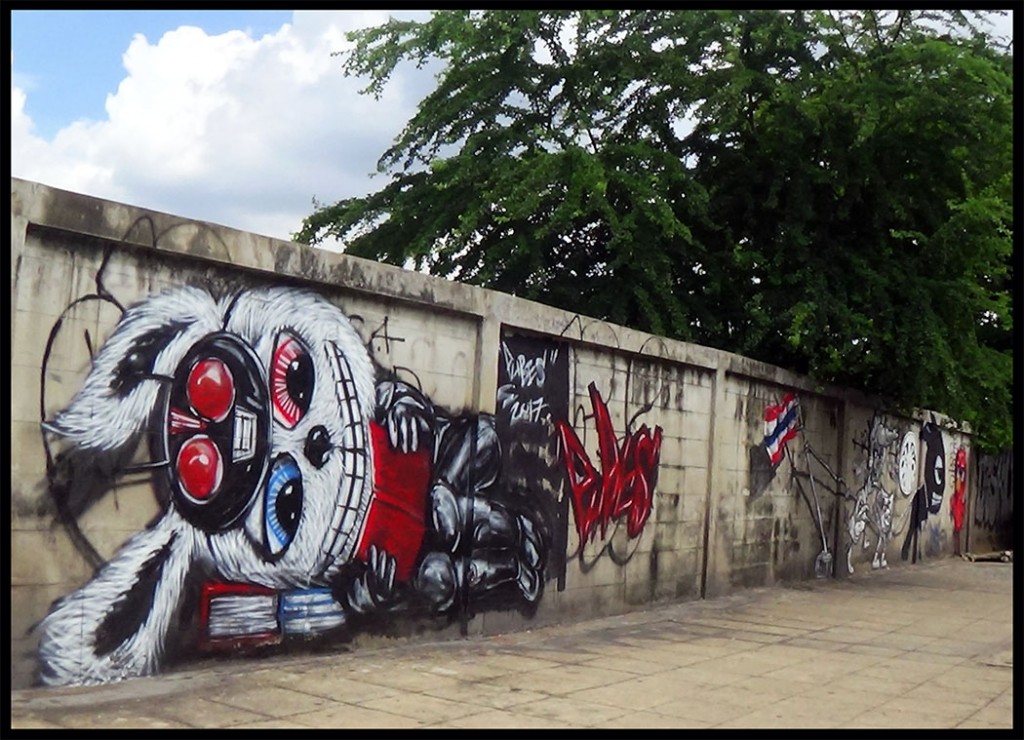 Street Art in Pathum Thani, Thailand, near Future Park Mall, photos captured on Tuesday, August 22, 2017
Street Art in Pathum Thani, Thailand, near Future Park Mall, photos captured on Tuesday, August 22, 2017
Photograph by Ing-On Vibulbhan-Watts
Museums and art galleries in Bangkok
| Plai Nern PalacePrasart MuseumPrincess Maha Chakri Sirindhorn Anthropology CentreQueen Sirikit GalleryRoyal Barge National MuseumRoyal Elephant National Museum |
For more information please visit the following link:
https://en.wikipedia.org/wiki/Silpakorn_University_Art_Gallery
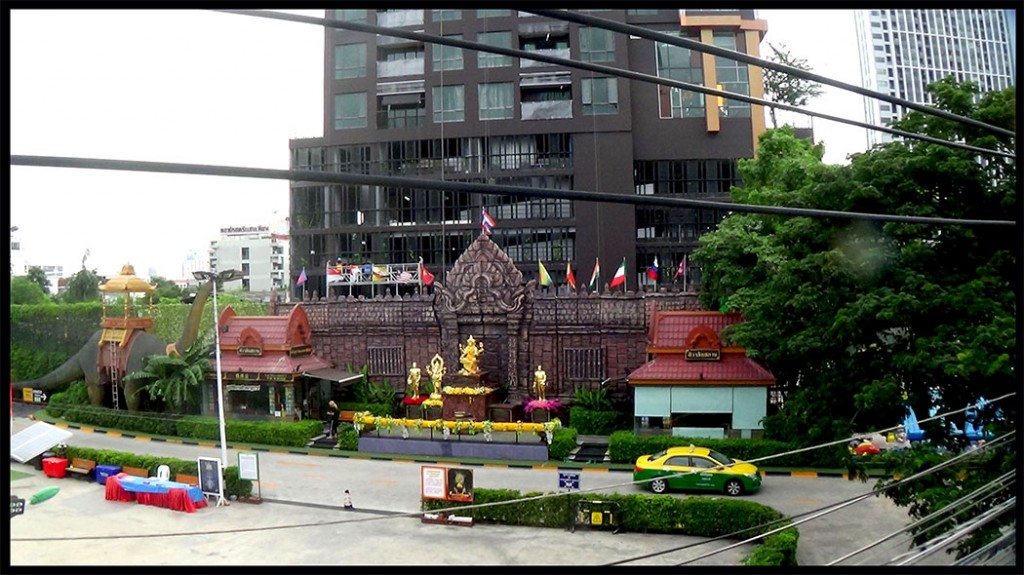 The Bazaar Area at the PodStel Hotel Complex, Lad Prao Road, Bangkok, Thailand
The Bazaar Area at the PodStel Hotel Complex, Lad Prao Road, Bangkok, Thailand
Photograph by Ing-On Vibulbhan-Watts
“Podstel Hostel Bangkok
is a brand new premium hostel “Poshtel”, that has over 200 beds to offer in over 5 different room types. Located in an upcoming district of Bangkok right by the intersection of Ratchadaphisek and Ladprao roads, just steps away from two MRT (subway) stations (Ladprao and Ratchadaphisek), the rest of Bangkok city is just at your door step. The hostel itself is within a part of a larger complex called The Bazaar Ratchadaphisek, which comprises of The Bazaar Hotel that accommodates up to 800 rooms, offices, municipal shops, restaurants, a 24 hour supermarket and convenience store, a nightly food street, a full facility gym with a pool, a Muay Thai boxing school, and daily entertainment cabaret and boxing shows at The Bazaar Theater. No doubt this makes The Bazaar a destination in itself.”
For more information please visit the following link:
https://podstelbangkok.com/
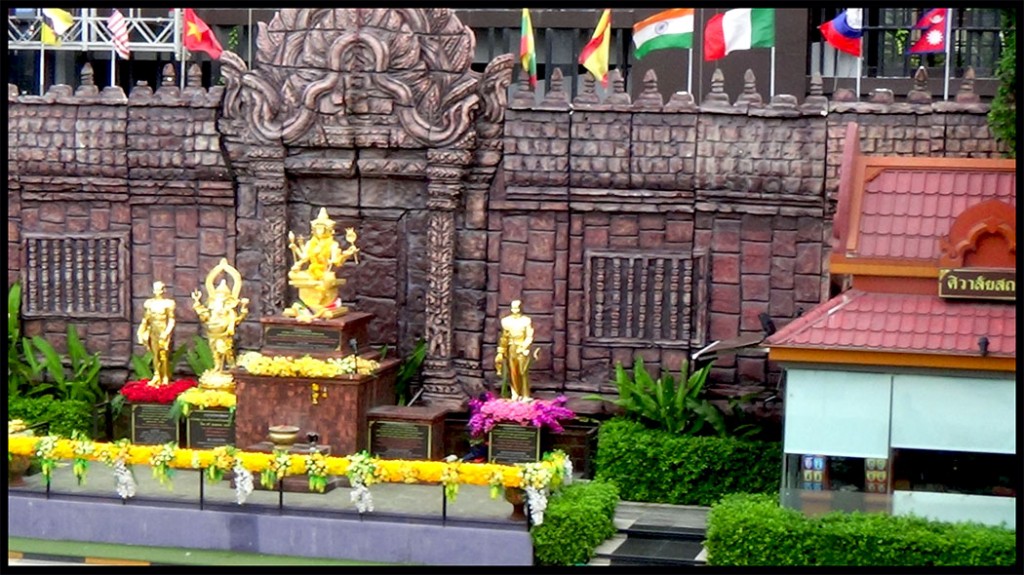 The Bazaar Area at the PodStel Hotel Complex, Lad Prao Road, Bangkok, Thailand
The Bazaar Area at the PodStel Hotel Complex, Lad Prao Road, Bangkok, Thailand
“Which Hindu gods are widely worshiped in Thailand? Why?
Nasa Saze, I am a scientist
Thailand adopt worshipping some Hindu gods and goddesses. I think it is true that Brahma is widely worshipped more than Vishnu and Shiva. Brahma is the god of creation that is why people worship him most. Vishnu is the god of protection might be worshiped in specific places. Shiva was mostly worshiped in the old time while Khmer Empire was ruling parts of Thailand, but he is the god of destruction who is not likely to be worshiped. Thais worship only some Hindu gods or goddesses who (they believe) can give their wishes come true. Some certain places may developed their belief to a specific god such as the worshipping of the Brahma at Erawan Shrine in Bangkok. Many hotels in Thailand will have small shrines of Brahma or Vishnu in front of the hotels.”
For more information please visit the following link:
https://www.quora.com/Which-Hindu-gods-are-widely-worshiped-in-Thailand-Why
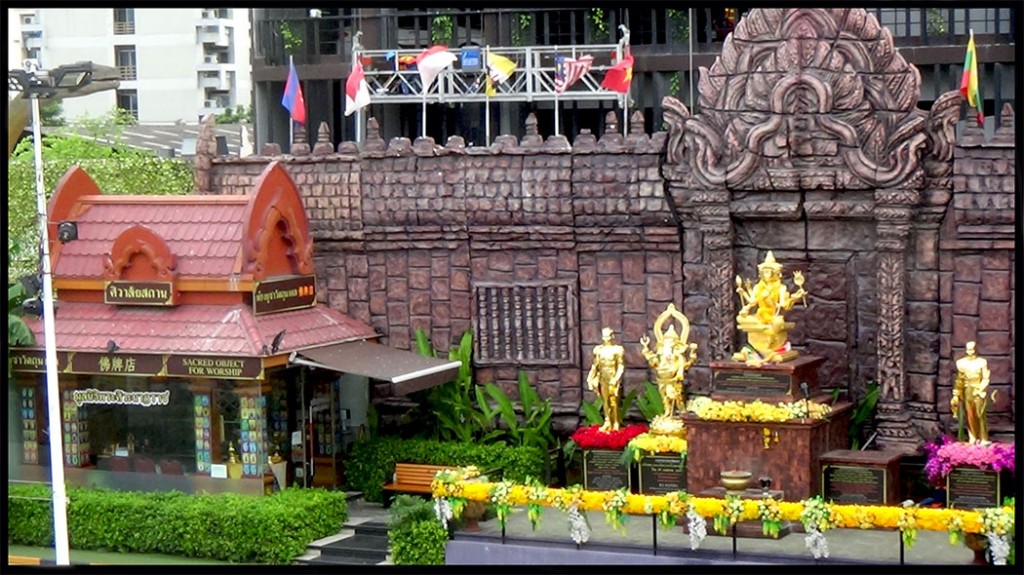 The Bazaar Area at the PodStel Hotel Complex, Lad Prao Road, Bangkok, Thailand
The Bazaar Area at the PodStel Hotel Complex, Lad Prao Road, Bangkok, Thailand
“Another god who is the son of Shiva, the god Ganesha, is also widely worshiped in many places in Thailand. Thais believe that Ganesha is the god of arts. Everyone who work in the artist field will have the tradition to held ceremonies to pray for this god.”
For more information please visit the following link: https://www.quora.com/Which-Hindu-gods-are-widely-worshiped-in-Thailand-Why
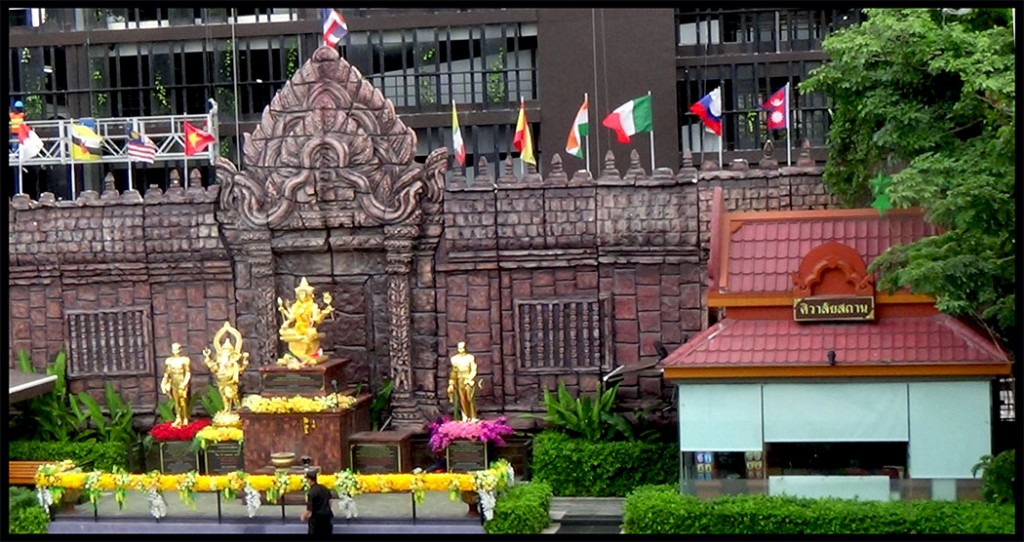 The Bazaar Area at the PodStel Hotel Complex, Lad Prao Road, Bangkok, Thailand
The Bazaar Area at the PodStel Hotel Complex, Lad Prao Road, Bangkok, Thailand
“Goddess of rivers and water, the goddess Ganges, is widely worshiped. Every year Thailand will have the Loy Krathong festival to thank the goddess Ganges. People will make krathong, a floating vessel made from any materials that can float on water with beautiful decorations with flowers and candles and the scent sticks, and then float in rivers, ponds, or reservoirs. This is one of the most famous festival of the year.”
For more information please visit the following link:
https://www.quora.com/Which-Hindu-gods-are-widely-worshiped-in-Thailand-Why
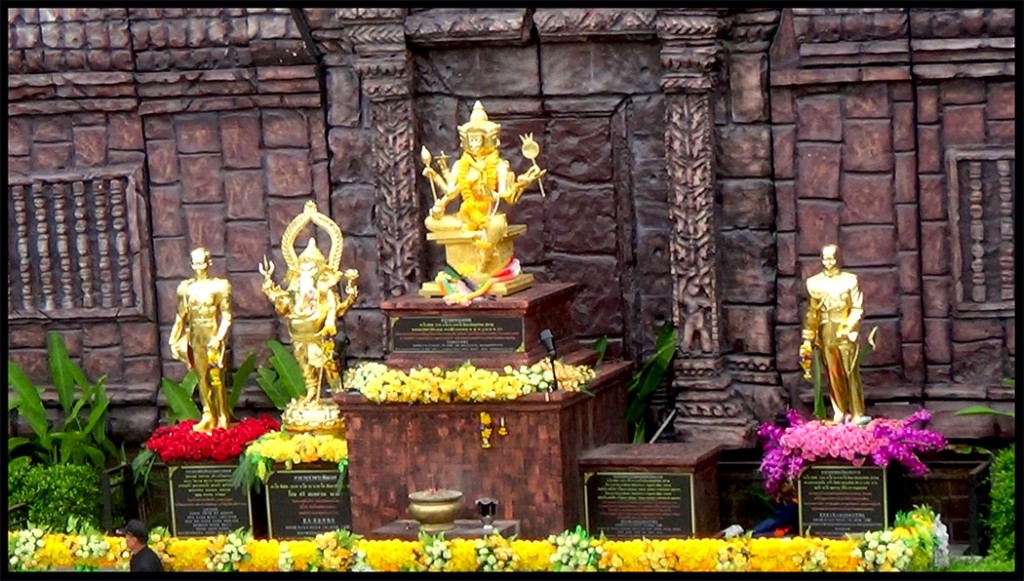 The Bazaar Area at the PodStel Hotel Complex, Lad Prao Road, Bangkok, Thailand
The Bazaar Area at the PodStel Hotel Complex, Lad Prao Road, Bangkok, Thailand
“Goddess of the Earth, Phra Mae Thorani, is worshiped by everyone or at least some farmers. I am not sure that this goddess exist in Hindu or not, but I believe Thais adopt the idea that there is a holy spirit of the Earth from Hindu. When farmers will start new season of farming, they will pray for this goddess. There is no big statue or shrine of this goddess, but she is very well-known and everywhere. When Thais go to make merit at temples, they will pass the merit to their dead love ones. There will be a ceremony that the monks will chant a montra to pass the merit to spirits of the dead ones. During the chanting, people will pour water from a jar to a container. This is a symbolic ritual to pass the merit to the water. Then the water will be poured under trees or any ground in the temple. People will ask Phra Mae Thorani to pass the merit to the spirits.”
For more information please visit the following link:
https://www.quora.com/Which-Hindu-gods-are-widely-worshiped-in-Thailand-Why
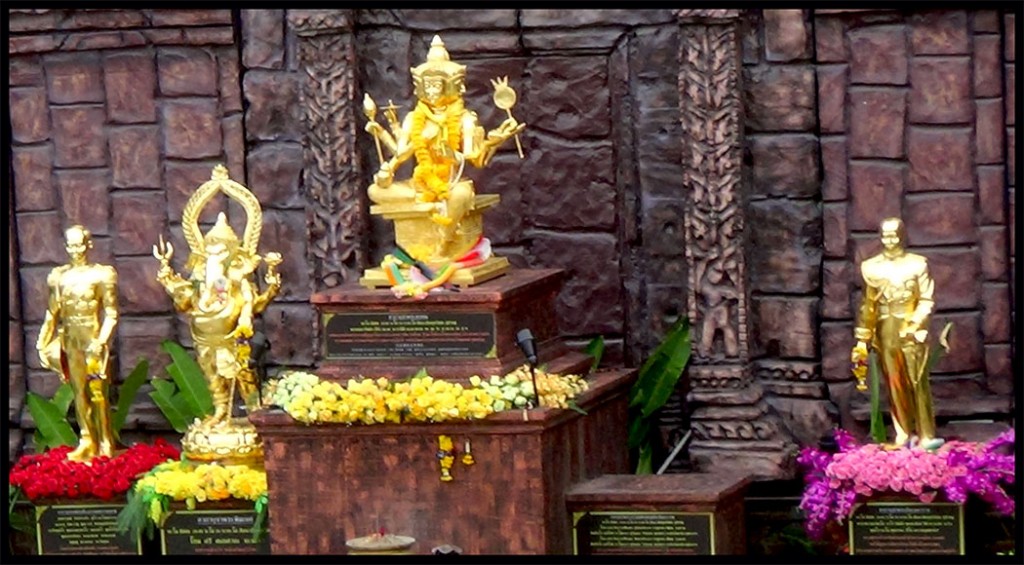 The Bazaar Area at the PodStel Hotel Complex, Lad Prao Road, Bangkok, Thailand
The Bazaar Area at the PodStel Hotel Complex, Lad Prao Road, Bangkok, Thailand
Photograph by Ing-On Vibulbhan-Watts
People pouring water to pass the merit
There is a goddess I am not sure she exists in Hindu or not. The goddess of farming, Phra Mae Posop, is widely worshiped by Thai farmers. During the rice farming season, farmers will held a ceremony (or more 2 or 3 ceremonies) to pray for this goddess to ask her for successful farming.
For more information please visit the following link:
https://www.quora.com/Which-Hindu-gods-are-widely-worshiped-in-Thailand-Why
 The Bazaar Area at the PodStel Hotel Complex, Lad Prao Road, Bangkok, Thailand
The Bazaar Area at the PodStel Hotel Complex, Lad Prao Road, Bangkok, Thailand
“A ceremony to worship goddess of farming
People in ancient time adopt the idea that their kings are avatars of Vishnu from ancient Khmer Empire. There are some traditions of expressing the king status as semi-divine in the royal ceremonies that are still practicing until now. People in rural area are still worshiping the king as a semi-divine. In modern Thailand, Thai people don’t worship the king like god, instead they think of the king and the royals as celebrities. Some express their respects to the royals as high as the most senior members of their families.”
For more information please visit the following link:
https://www.quora.com/Which-Hindu-gods-are-widely-worshiped-in-Thailand-Why
 The Bazaar Area at the PodStel Hotel Complex, Lad Prao Road, Bangkok, Thailand
The Bazaar Area at the PodStel Hotel Complex, Lad Prao Road, Bangkok, Thailand
Photograph by Ing-On Vibulbhan-Watts
“Thailand major religion is Buddhism and there are some minor religions such as Islam, Christian, Sikhism, and Hindu. Some Buddhist ceremonies also adapt Hindu traditions and that makes it the mixed religion tradition. There are some who really believe in these gods. Nowadays, many Thais might not believe that the gods really exist, but they still follow the old traditions to held many ceremonies during a year.”
For more information please visit the following link:
https://www.quora.com/Which-Hindu-gods-are-widely-worshiped-in-Thailand-Why
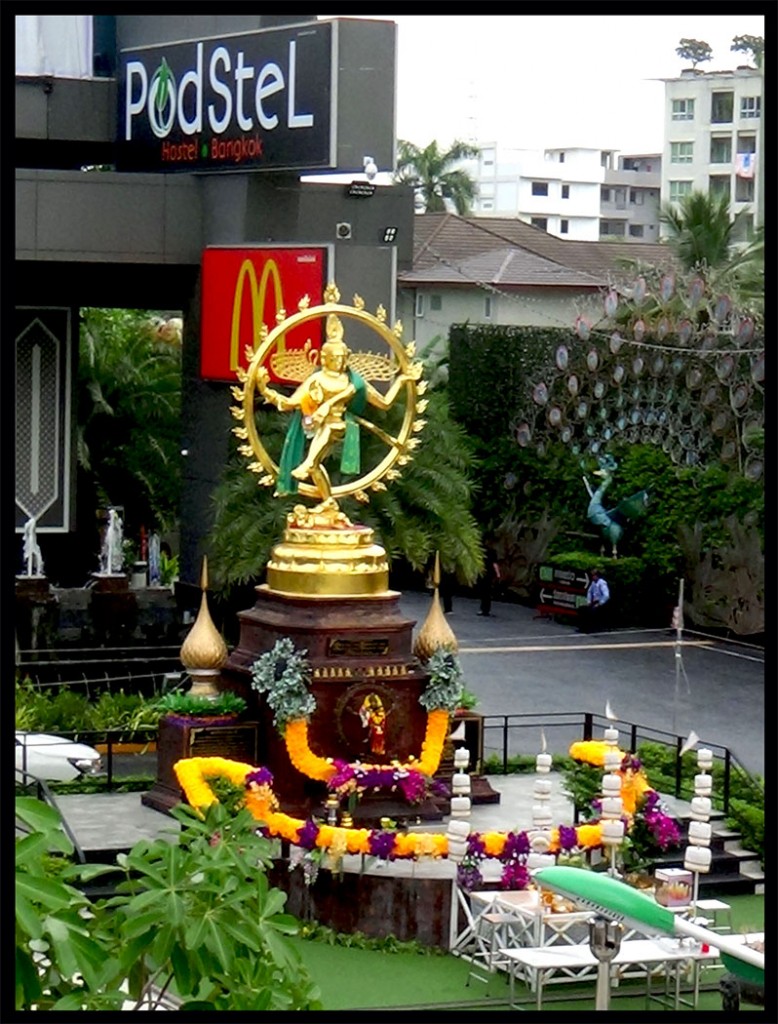 The Bazaar Area at the PodStel Hotel Complex, Lad Prao Road, Bangkok, Thailand
The Bazaar Area at the PodStel Hotel Complex, Lad Prao Road, Bangkok, Thailand
Photograph by Ing-On Vibulbhan-Watts
“The Deity (God) Brahma In the Hindu Religion
- Hindus believe that Brahma is the creator of the world and everything in it. He was most respected in the early period.
- At first, he was only an abstract, without forms, until later that the Brahmans created his appearance to make it easier for people to worship. Thus, he has become the god of four faces and four arms.
- Brahma has a wife called Sarasvati and has a Hamsa as vehicle.
- Brahma’s origin has been recorded differently. But in the recent scriptures such as Purana, it is believed that he is born out of Vishnu’s navel. Although Brahma is the creator of the World, he has not actually been much respected. There is not any denomination which respects him in particular; instead he is included in other denominations which respect the other two principal gods.”
For more information please visit the following link:
https://www.thailandsworld.com/en/thai-people/hindu-deities-in-thailand/index.cfm
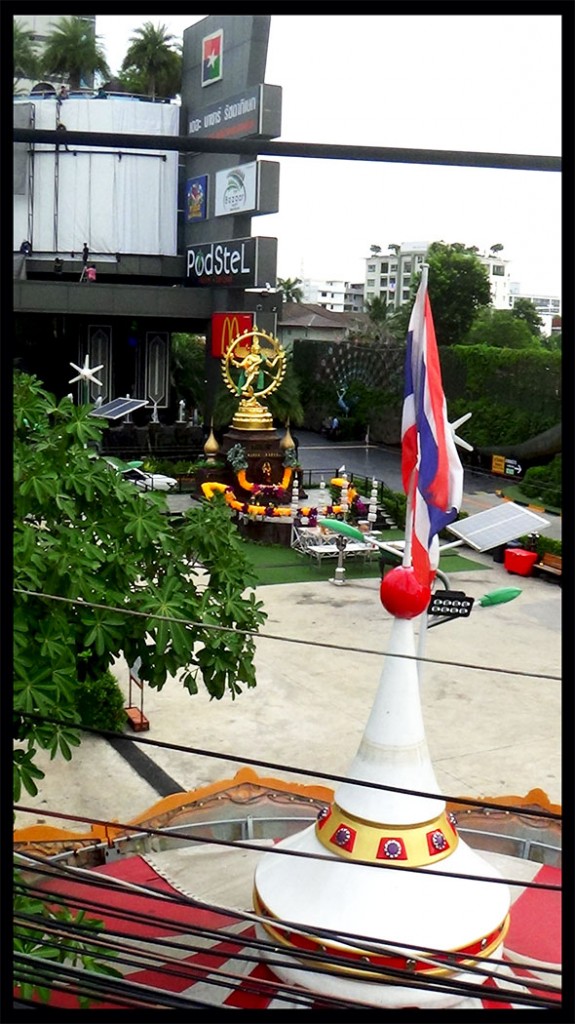 “Religion in Thailand is varied. There is no official state religion in the Thai constitution, which guarantees religious freedom for all Thai citizens, though the king is required by law to be Theravada Buddhist.[1] The main religion practiced in Thailand is Buddhism, but there is a strong undercurrent of Hinduism with its distinct priestly class.[2] The large Thai Chinese population also practices Chinese folk religions, including Taoism. The Yiguandao (Thai: Anuttharatham) spread in Thailand in the 1970s and it has grown so much in recent decades to come into conflict with Buddhism; it is reported that each year 200,000 Thais convert to the religion.[3] Many other people, especially among the Isan ethnic group, practice Tai folk religions. A significant Muslim population, mostly constituted by Thai Malays, is present especially in the southern regions.”
“Religion in Thailand is varied. There is no official state religion in the Thai constitution, which guarantees religious freedom for all Thai citizens, though the king is required by law to be Theravada Buddhist.[1] The main religion practiced in Thailand is Buddhism, but there is a strong undercurrent of Hinduism with its distinct priestly class.[2] The large Thai Chinese population also practices Chinese folk religions, including Taoism. The Yiguandao (Thai: Anuttharatham) spread in Thailand in the 1970s and it has grown so much in recent decades to come into conflict with Buddhism; it is reported that each year 200,000 Thais convert to the religion.[3] Many other people, especially among the Isan ethnic group, practice Tai folk religions. A significant Muslim population, mostly constituted by Thai Malays, is present especially in the southern regions.”
For more information please visit the following link:
https://en.wikipedia.org/wiki/Religion_in_Thailand
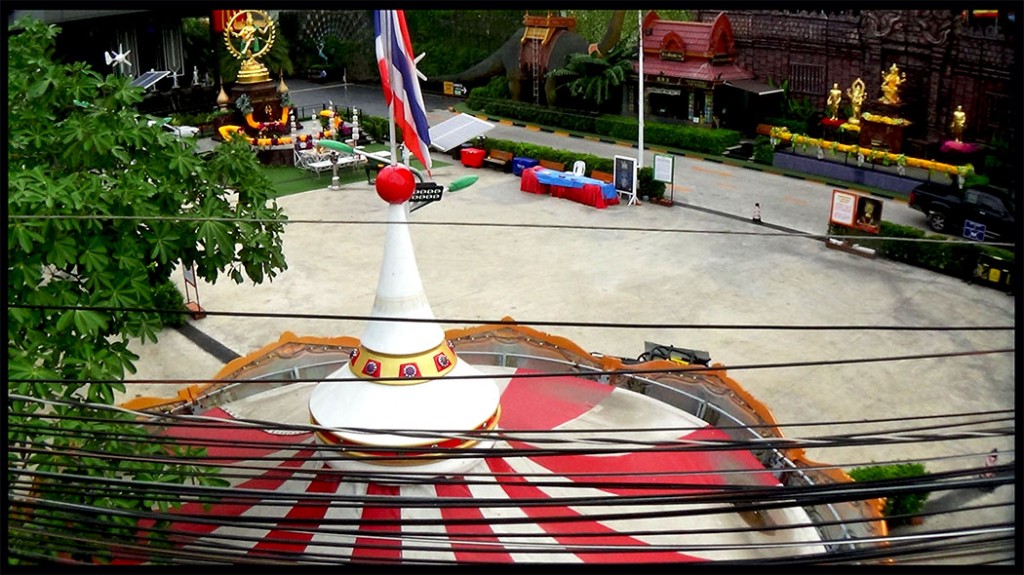 The Bazaar Area at the PodStel Hotel Complex, Lad Prao Road, Bangkok, Thailand
The Bazaar Area at the PodStel Hotel Complex, Lad Prao Road, Bangkok, Thailand
“Podstel Hostel Bangkok
is a brand new premium hostel “Poshtel”, that has over 200 beds to offer in over 5 different room types. Located in an upcoming district of Bangkok right by the intersection of Ratchadaphisek and Ladprao roads, just steps away from two MRT (subway) stations (Ladprao and Ratchadaphisek), the rest of Bangkok city is just at your door step. The hostel itself is within a part of a larger complex called The Bazaar Ratchadaphisek, which comprises of The Bazaar Hotel that accommodates up to 800 rooms, offices, municipal shops, restaurants, a 24 hour supermarket and convenience store, a nightly food street, a full facility gym with a pool, a Muay Thai boxing school, and daily entertainment cabaret and boxing shows at The Bazaar Theater. No doubt this makes The Bazaar a destination in itself.”
For more information please visit the following link:
https://podstelbangkok.com/
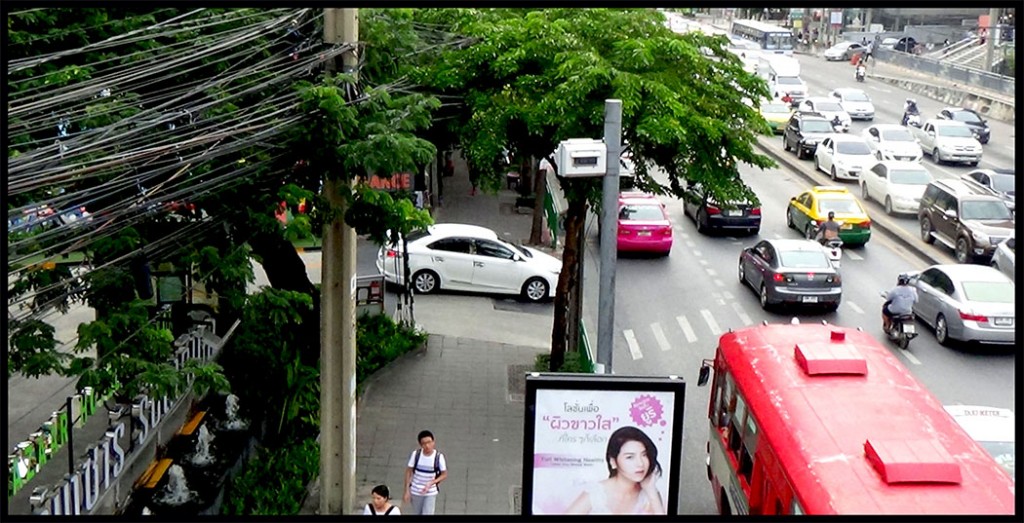 Lat Phrao roads intersection of Ratchadaphisek Road, Bangkok, Thailand
Lat Phrao roads intersection of Ratchadaphisek Road, Bangkok, Thailand
Lat Phrao Road or Thailand Route 366 is a major road in Bangkok, Thailand. Despite its name the road does not run through the nearby Lat Phrao District. It begins at Phahonyothin Road in Chatuchak District, passes through Huai Khwang and Wang Thonglang, and ends in Bang Kapi District. The road is serviced by two MRT stations: Phahon Yothin and Lat Phrao.
For more information please visit the following link:
https://en.wikipedia.org/wiki/Lat_Phrao_Road
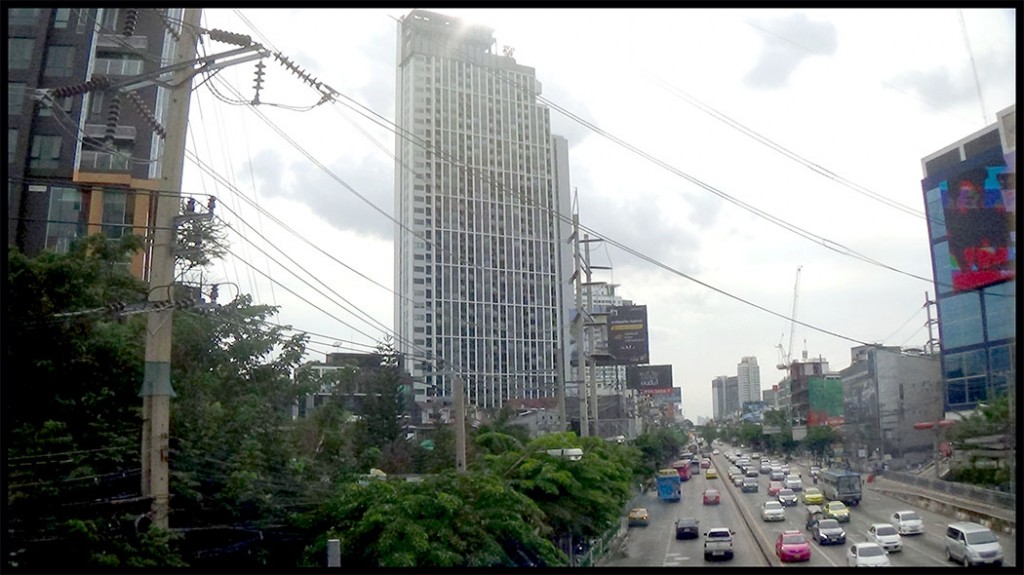 Ratchadaphisek Road, Bangkok, Thailand
Ratchadaphisek Road, Bangkok, Thailand
“Ratchada is overwhelmingly modern but with a less built-up, more out of town feel than, say, Sukhumvit. Distinctive landmarks along Ratchadaphisek Road include the well-known Thailand Cultural Centre, local nightclubs and pubs, as well as department stores and value-for-money hotels. Located just to the north of the downtown metropolitan area, it runs parallel to Viphavadi Rangsit Road to the east, stretching northwards all the way from the end of Asok Road (Sukumvit Soi 21) to Lad Phrao Road. In recent years it’s gained something of a reputation for being an affordable nightlife spot – although this is more among locals than the expat or holiday crowd. It is extremely well-served by the MRT underground.”
For more information please visit the following link:
https://www.bangkok.com/ratchadapisek/#
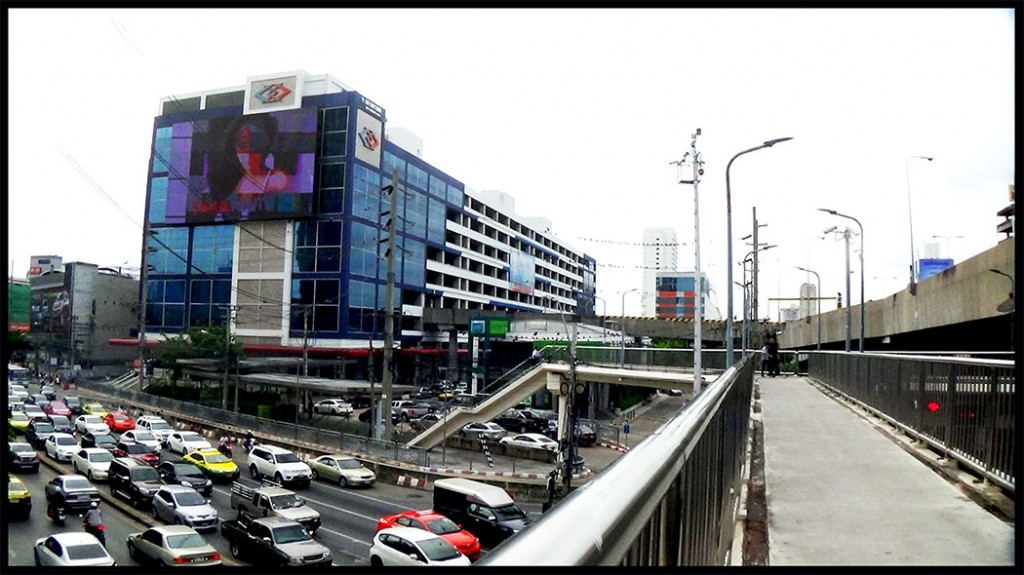
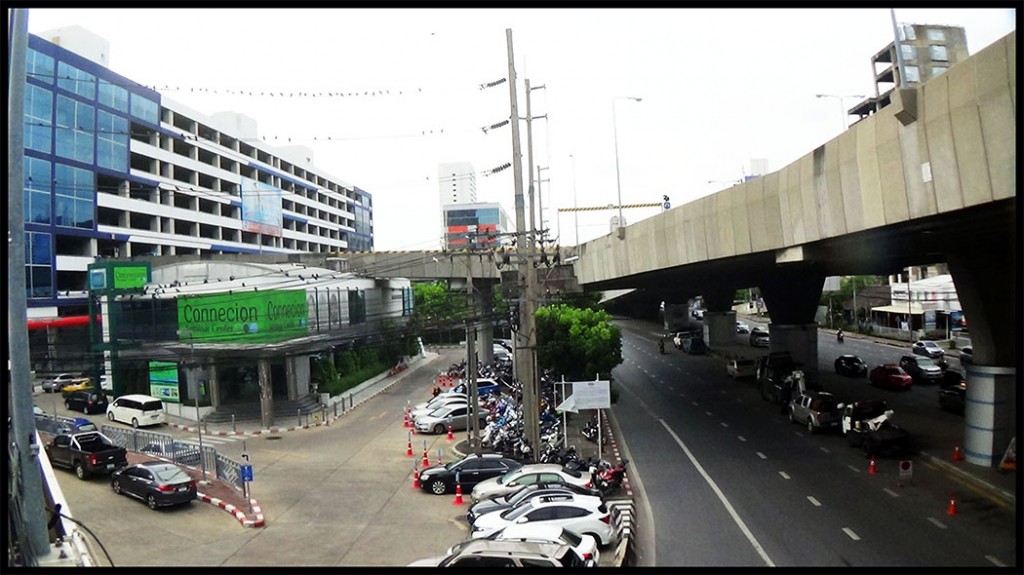
 Ratchadaphisek Road, Bangkok, Thailand
Ratchadaphisek Road, Bangkok, Thailand
Photograph by Ing-On Vibulbhan-Watts
“Ratchadapisek is situated to the north of metropolitan area. Ratchadapisek Road runs parallel to Viphavadi Rangsit Road from Lad Prao to Sukumvit’s Soi Asoke 21. Ratchadapisek is within the area of the Thai Cultural Center, several leading department stores, and a wide selection of entertainment venues. Transportation access into and out of Bangkok from here is easy and there are good connections to the eastern seaboard. From 6:00 PM onwards, along Silom Road are numerous street bazaars selling everything from cloths, to watches and souvenirs. To complete your entertainment options, there’s a good choice of pubs and restaurants and Patpong is just around the corner. The Chatuchak weekend market is one Bangkok’s most famous markets. It is popular with locals and visitors alike, looking for a bargain from everything such as discount clothes and souvenirs, to ornate Thai handcrafts.”
For more information please visit the following link:
https://www.bangkok.com/ratchadapisek/#
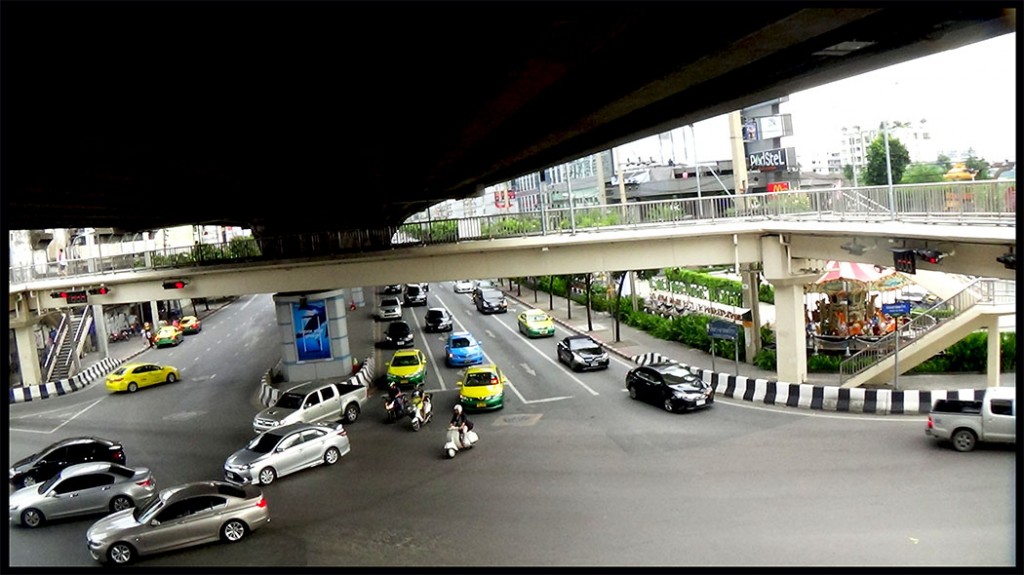 The intersection of Ratchadaphisek and Ladprao roads, just steps away from two MRT (subway) stations (Ladprao and Ratchadaphisek)
The intersection of Ratchadaphisek and Ladprao roads, just steps away from two MRT (subway) stations (Ladprao and Ratchadaphisek)
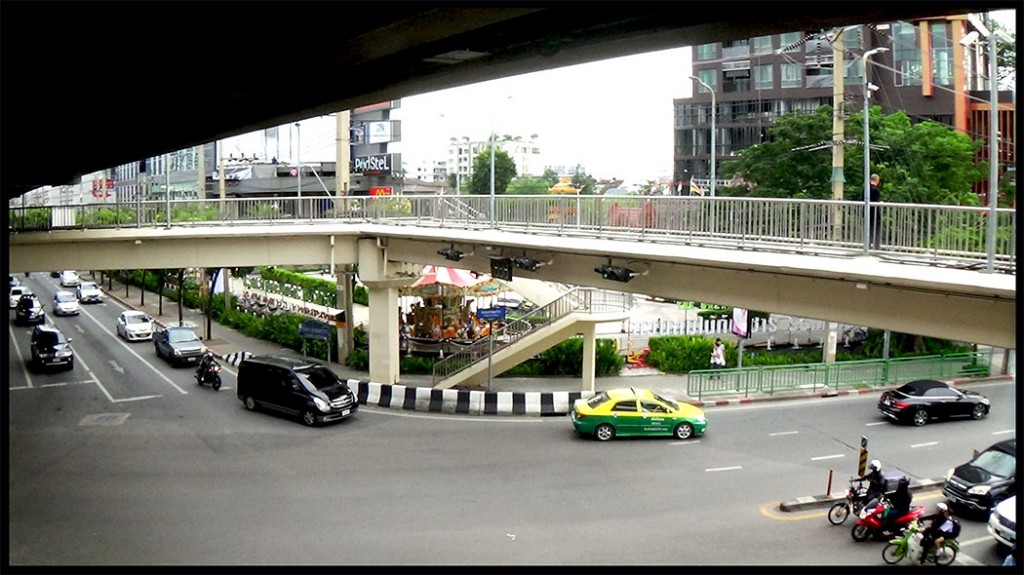 Ratchadaphisek is north of Sukhumvit and is a busy commercial and entertainment district. Accommodation on Ratchadaphisek Road has great access to restaurants, malls and nightclubs. Lots of students, young Bangkok office workers and expat teachers call this part of the city home.
Ratchadaphisek is north of Sukhumvit and is a busy commercial and entertainment district. Accommodation on Ratchadaphisek Road has great access to restaurants, malls and nightclubs. Lots of students, young Bangkok office workers and expat teachers call this part of the city home.
The subway (MRT) follows Ratchadaphisek Road, making it safe and easy to connect between shops, restaurants and hotels. The two major cultural attractions in the area are Siam Niramit and Thailand Cultural Center. These are great venues for first-time visitors to learn about Thai traditions and art, and the presentation includes enough excitement and special effects to interest children.
Hotels in Ratchadaphisek are large and especially popular with Chinese and Japanese tourists. Prices are affordable in Ratchadaphisek, and since guests have access to the subway they can easily connect to the Grand Palace or the Sukhumvit area easily.
For more information please visit the following link:
https://www.agoda.com/ratchadaphisek/maps/bangkok-th.html?cid=-218  “Shopping centers including Lotus, Carrefour and Robinson are located next to the Cultural Center MRT station. The more affordable and more locally-flavored Jusco shopping center is also only a few steps from Thailand Cultural Center MRT. Esplanade is the most popular mall with younger people, featuring an ice-skating rink, cinema complex, mini skate park and several big-chain cafés and restaurants. Behind Esplanade is a dedicated nightclub zone with several large clubs that are busy every night of the week with Bangkok locals. Across the road are Ratchada Soi 4 and Soi 8 – both of which feature many large nightclubs, the most popular called Hollywood.”
“Shopping centers including Lotus, Carrefour and Robinson are located next to the Cultural Center MRT station. The more affordable and more locally-flavored Jusco shopping center is also only a few steps from Thailand Cultural Center MRT. Esplanade is the most popular mall with younger people, featuring an ice-skating rink, cinema complex, mini skate park and several big-chain cafés and restaurants. Behind Esplanade is a dedicated nightclub zone with several large clubs that are busy every night of the week with Bangkok locals. Across the road are Ratchada Soi 4 and Soi 8 – both of which feature many large nightclubs, the most popular called Hollywood.”
For more information please visit the following link:
https://www.agoda.com/ratchadaphisek/maps/bangkok-th.html?cid=-218
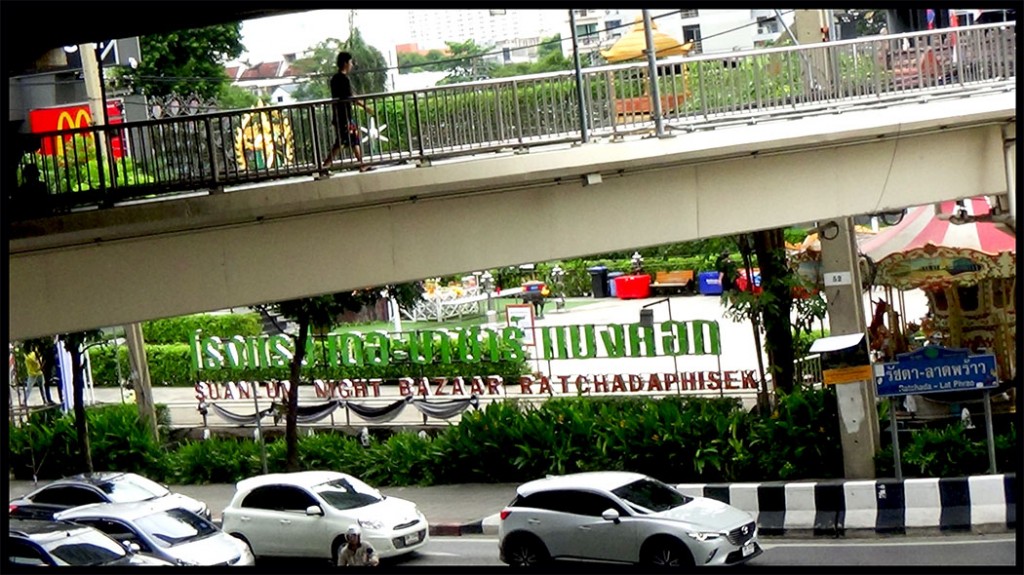 Ratchadaphisek Road, Bangkok, Thailand
Ratchadaphisek Road, Bangkok, Thailand
Photograph by Ing-On Vibulbhan-Watts
“Ratchadaphisek covers a large area which is mostly residential and gives visitors to Bangkok a good idea about what life is like for locals. Since it’s also where many expats find affordable accommodation there are plenty of facilities geared towards foreigners, with markets (Ratchada Soi 14), the vintage weekend market (Huay Kwang MRT), Esplanade and Robinson shopping complex presenting plenty to do.”
For more information please visit the following link:
https://www.agoda.com/ratchadaphisek/maps/bangkok-th.html?cid=-218
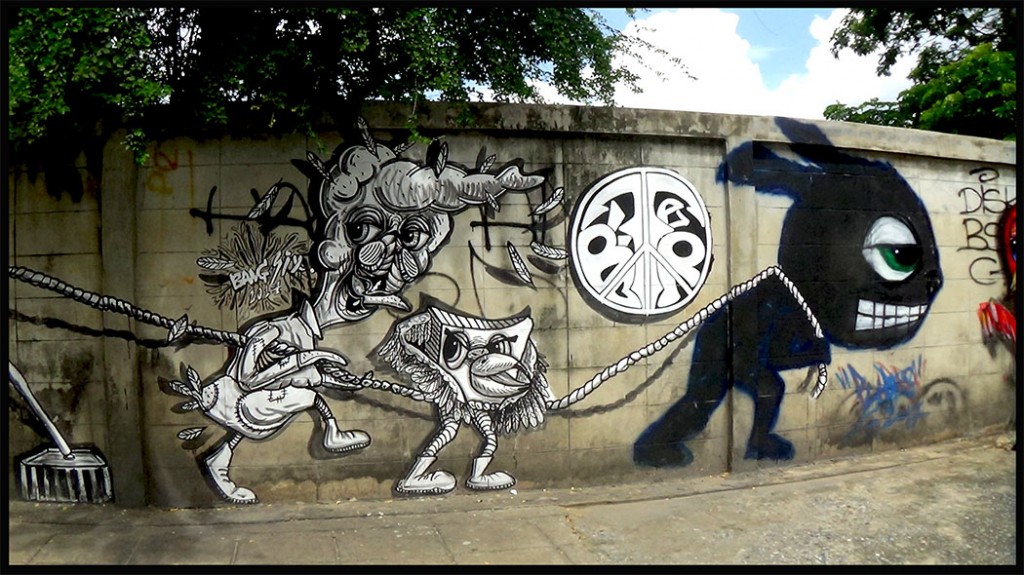
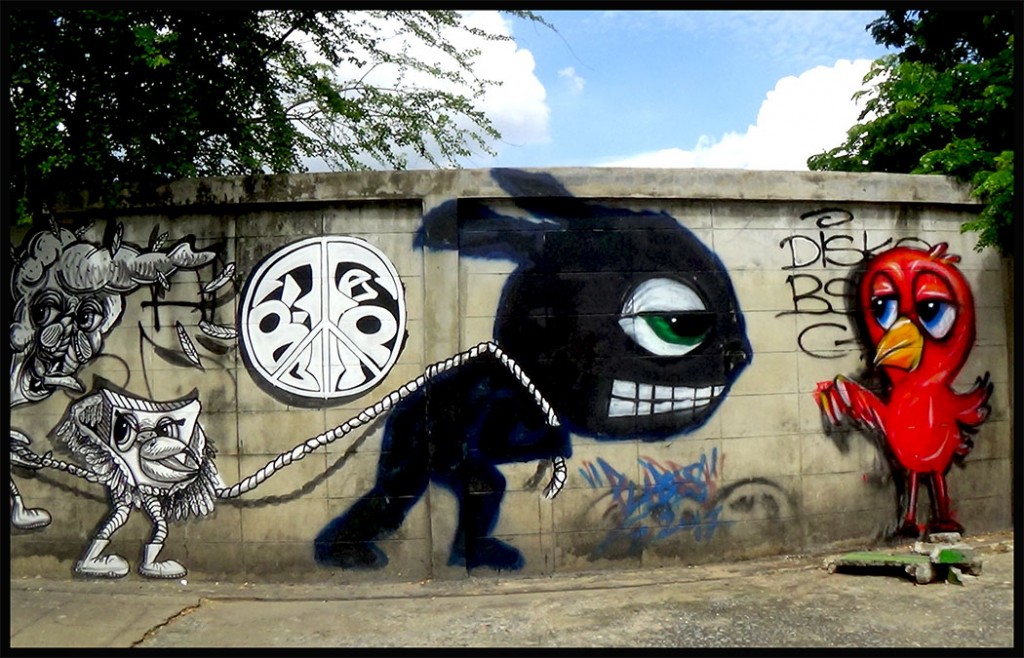
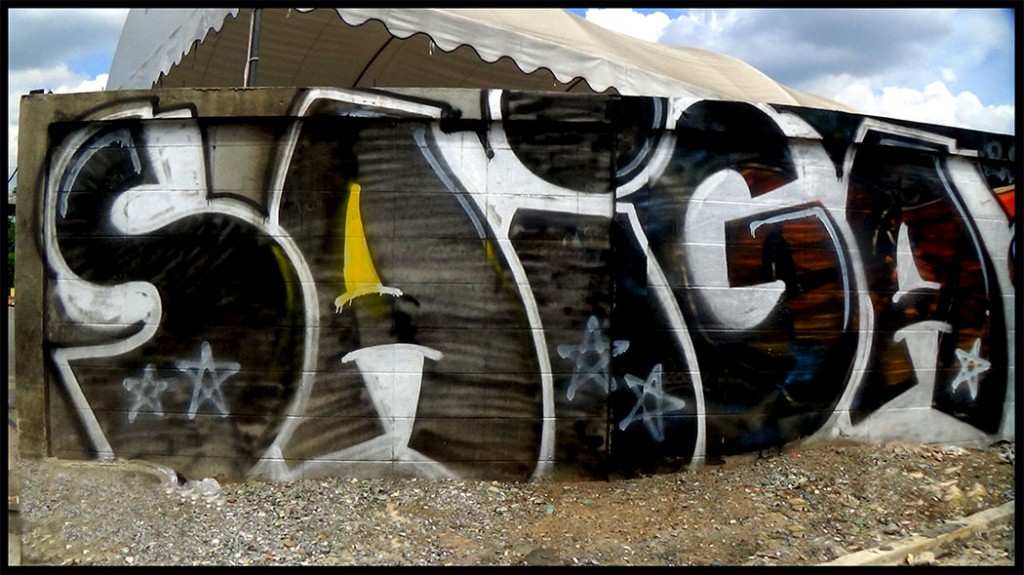

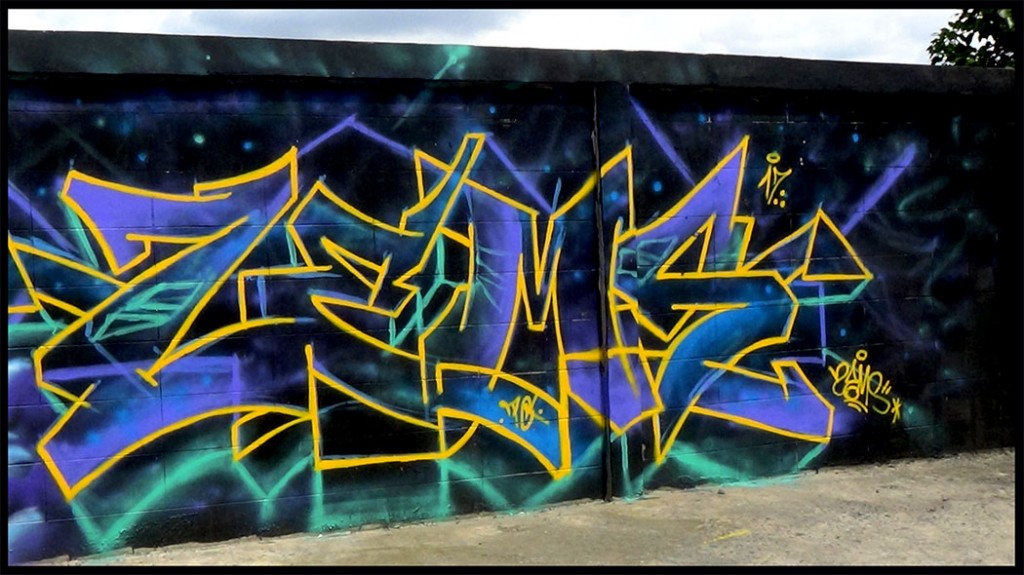
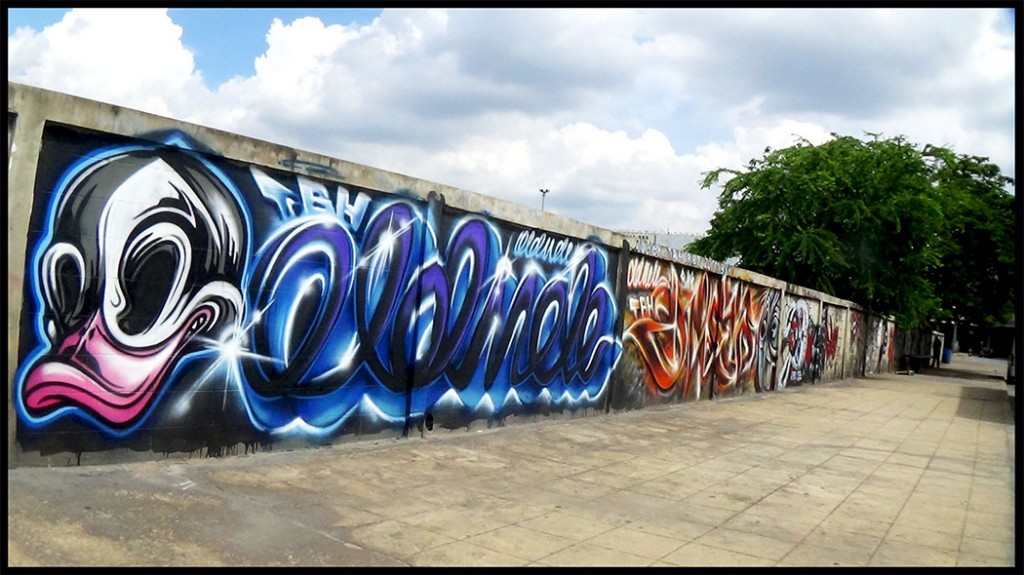
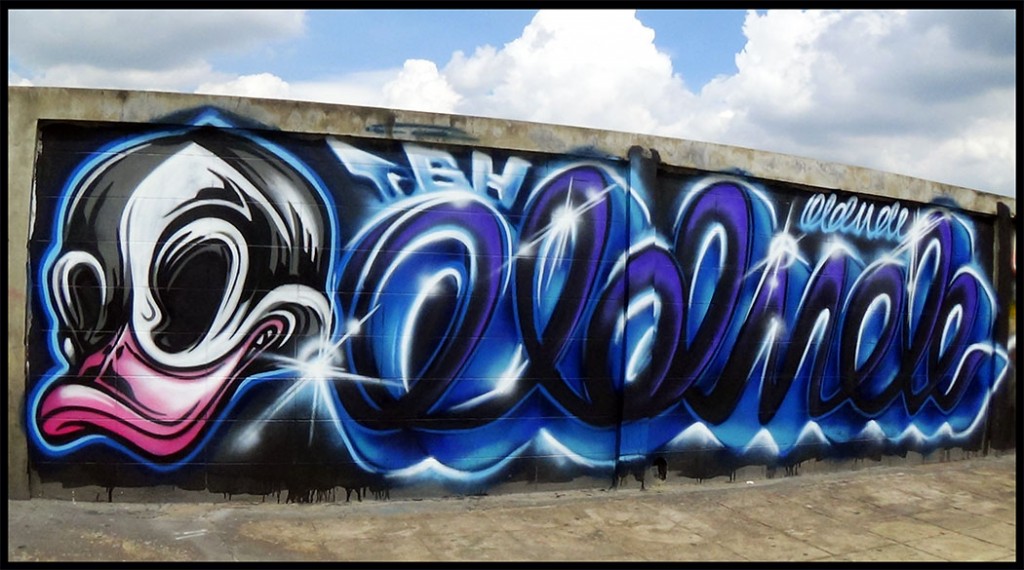
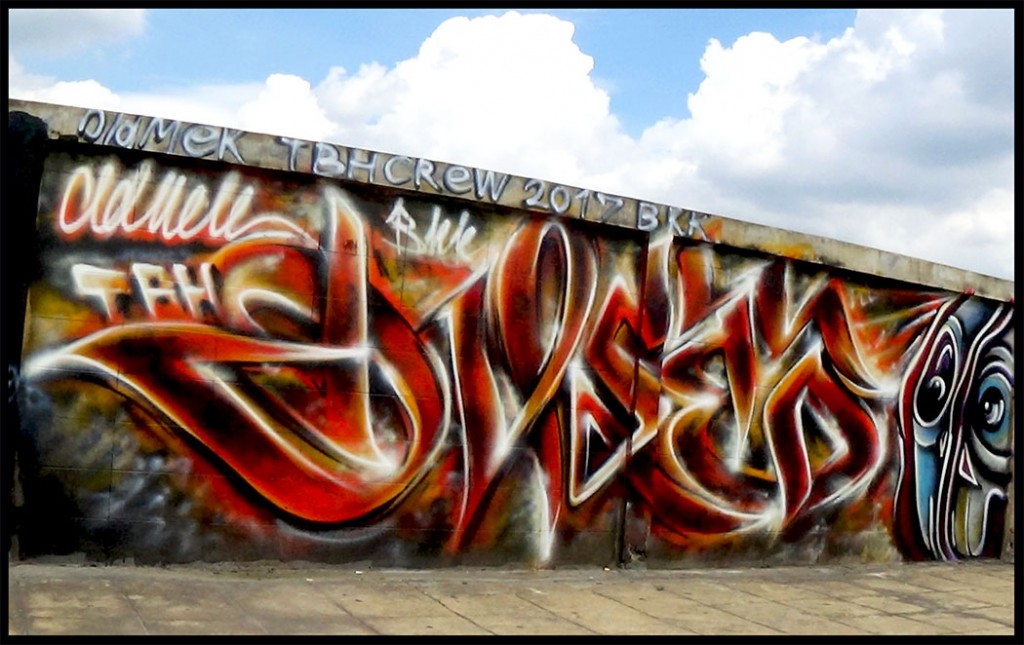
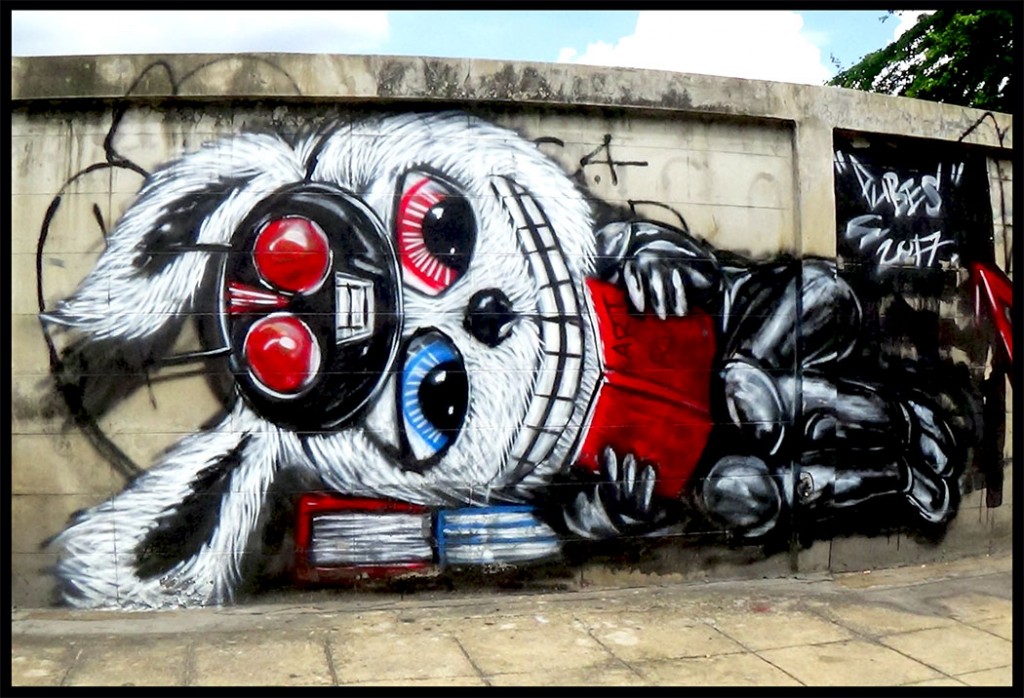
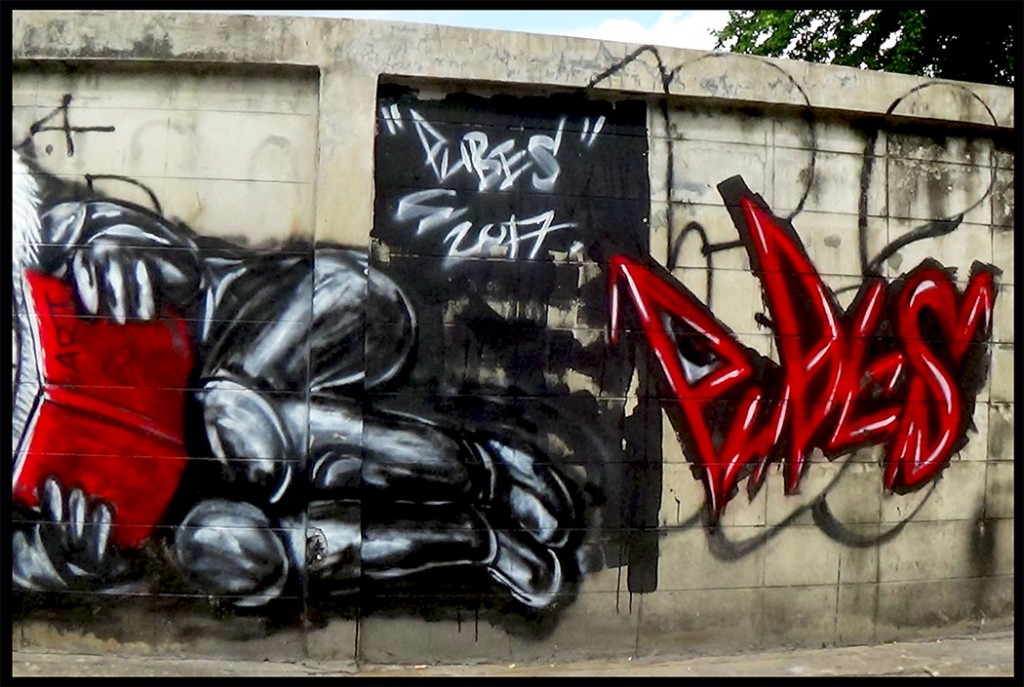
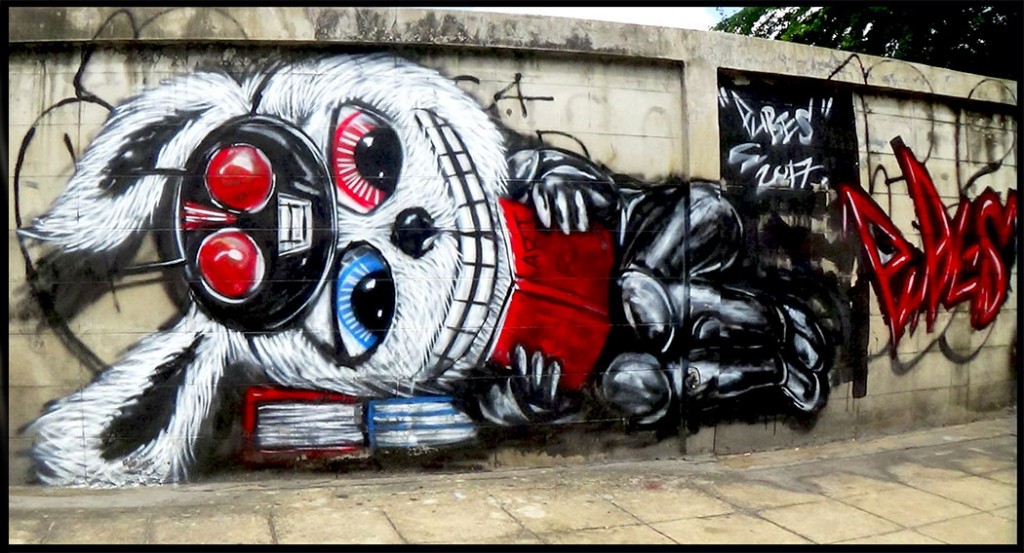
Leave a Reply